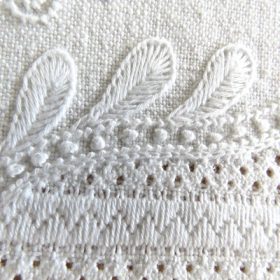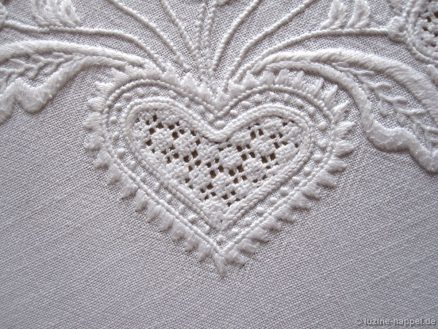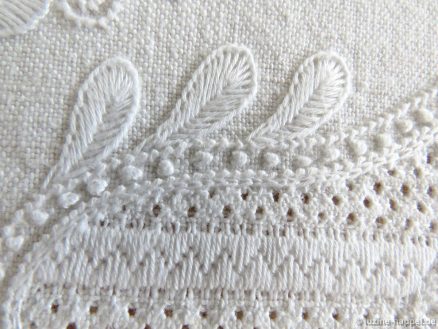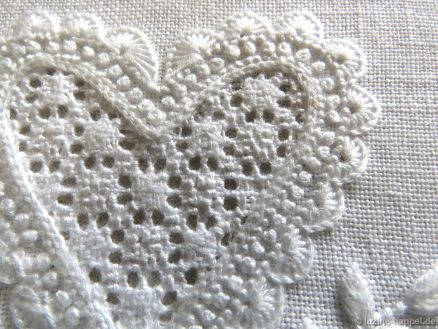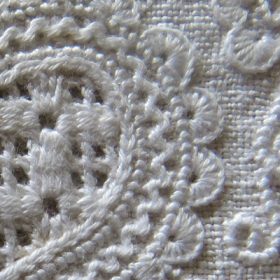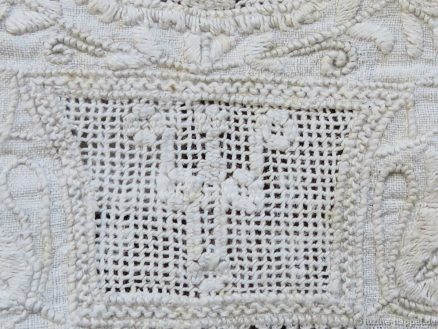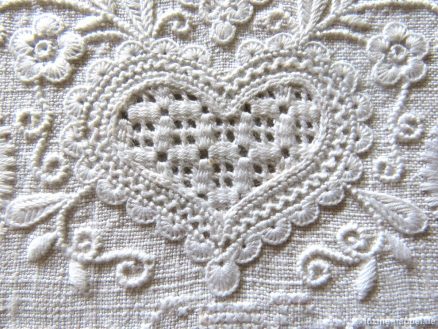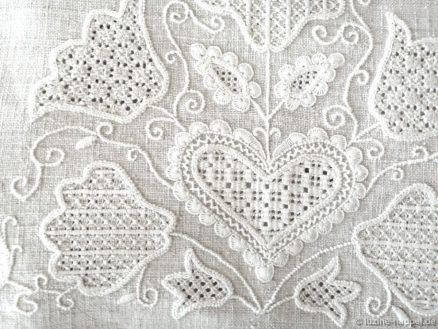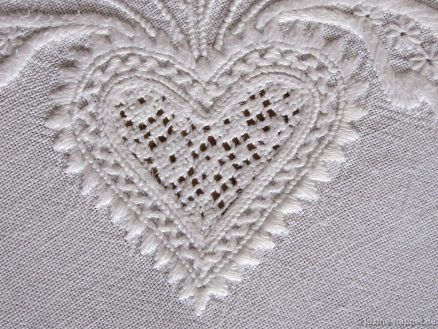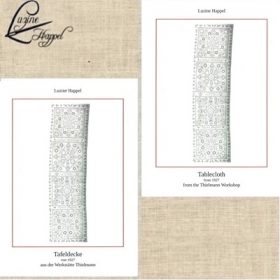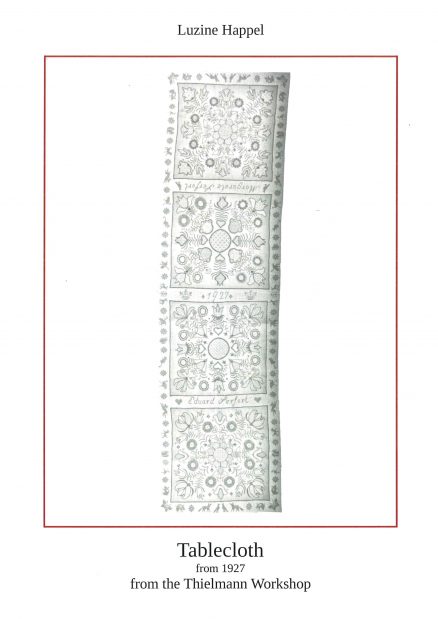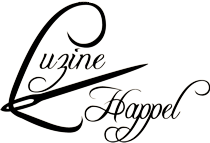In Schwalm whitework, large motifs often contain a double outline. This makes the relationship between the inner surface and the edge appear more balanced, and the motifs appear more harmonious and less massive.
Be it concentric circles

or double outlines of hearts,

tulipsaund

baskets.

Further examples can be found in the adjacent “Free Designs” running tape.
Usually, but not always, they run completely around the motif. In the examples below, they only run along the sides and bottom of the tulips.

But how do you design such small bands?
There is a wide range of possibilities, which I will gradually show in blog posts.
The simplest option is to leave the area blank, as here on a parade cushion border that is more than a hundred years old.

These open spaces appear more striking when a contrast is created between the open space and adjacent lines.
This can be seen on a bodice sleeve border that is more than a hundred years old.

as well as on a contemporary tea cloth

There, chain stitches were embroidered over the lines using coarse thread on the finest linen batiste (better seen in the photo with a white background).


In the second example, chain stitches were worked on both sides in addition to the coral knot stitches that run along the lines.

The raised stitches create a nice contrast to the flat fabric, making the motif’s border design expressive.
Please see also:
Traditional Schwalm Whitework
Transition from Early to Later Schwalm Whitework (1)
Schwalm Whitework – Sunflowers
Schwalm Parade Cushion Border (A)
Traditional Schwalm Bodice (D) Embroidery
